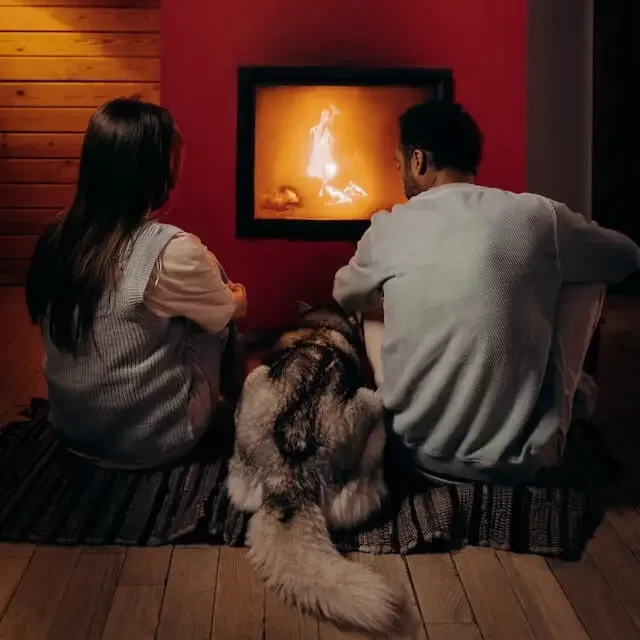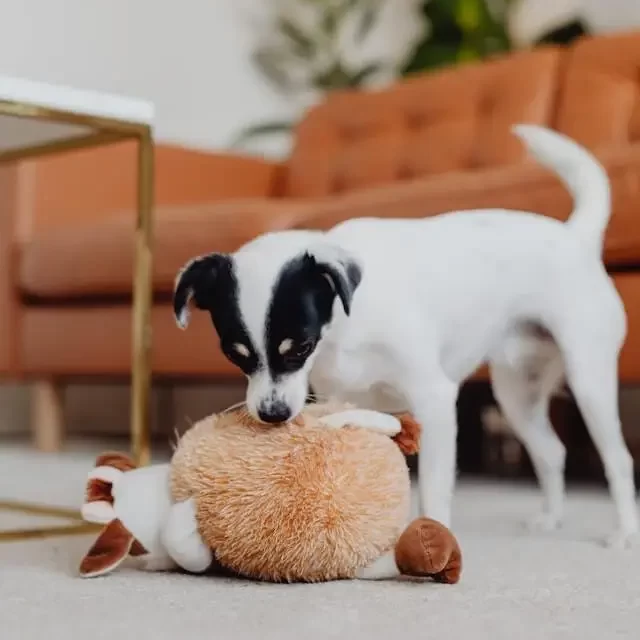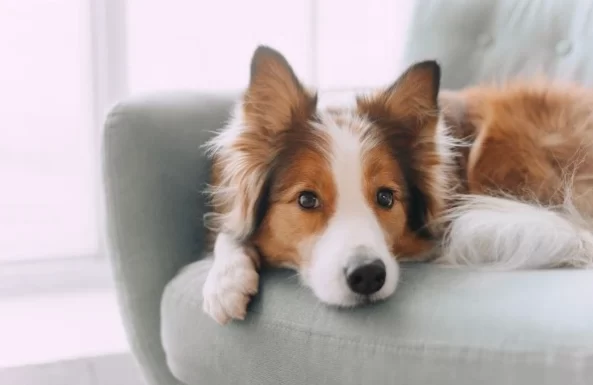Dogs are amazing companions that can fill your life with a lot of love and excitement, but they can also sometimes be a lot to handle. They may misbehave or chew on things they shouldn’t, but worse than some light misbehaving is general unhappiness.
Thankfully, there are ways to make your home more relaxing for your dog so that you can enjoy life with your loveable pup.
Making Dog Comfortable at Home
Avoid Stressors
One of the best things you can do to make your home more relaxing for your dog is to remove the potential stressors that could hide around every corner. For example, there is the stereotype that dogs hate vacuums, and for a lot of dogs, it is true. If you want to make your home more relaxing, don’t leave the vacuum out for them to fear. Instead, keep scary items such as vacuums and anything else that can make loud noises out of sight.
Avoiding items such as a broom or a hairdryer are good ways to make your home more relaxing for your dog. You can’t avoid interacting with these things entirely, but when it does get time to use them, maybe do so in a room away from your pup. Doing this may be a slight inconvenience for you, but it’s really a great way to keep stressors out of your dog’s life.
Another strategy you could try is addressing these stressors through exposure therapy, but you should approach this method with caution. If you’re considering this route, be sure to consult with a professional or even take your dog to a therapy class to better understand why they may fear different objects. If your doing is whining then know about the Reasons for Dog Whining and How to Stop It.
Establish a Dedicated Dog-Friendly Space
Just like humans, dogs appreciate having their own personal space where they can retreat to when they need a break from the hustle and bustle of daily life. Designating a specific area in your home exclusively for your dog can make a world of difference in their comfort and relaxation and it is one of the best ways to make your home more relaxing for your dog.
Start by choosing a quiet and less-trafficked part of your home, such as a corner of the living room or a spare bedroom. Make this space cozy by placing a comfortable dog bed or a soft blanket for them to lie on. Ensure that it’s well-ventilated and has good natural light. This dedicated space should serve as a safe haven where your dog can relax and unwind without feeling disturbed. Learn How To Prepare Your Home for a New Puppy.

Use Aromatherapy and Calming Scents
Aromatherapy isn’t just for humans – it can be beneficial for dogs as well. Certain scents, such as lavender and chamomile, have natural calming properties that can help reduce anxiety and promote relaxation in dogs.
Consider using dog-safe essential oils or diffusers with calming scents in your home. Just be sure to consult with your veterinarian to ensure you’re using the right products and methods for your specific dog breed. Always use essential oils with caution around pets, as some can be harmful if ingested or applied directly to the skin
Establish a Regular Routine
In addition to avoiding stressors, you also need to establish a clear and regular routine for your dog. Part of the reason they can get so anxious is because they’re unsure of when they’re going to bed, eating, going outside, or playing. When you maintain a regular routine, your dog can rest easy and relax just knowing that you will be there to meet their needs.
A regular schedule will also make it easier for them to adjust if they decide to take trips or do things out of the ordinary. If you want to train your dog then read about Dog Training Techniques that actually work.
Provide Engaging Toys and Puzzles
A relaxed dog is often a tired dog. One of the best ways to make your home more relaxing for your dog and help him relax is by ensuring they have an outlet for their energy. Providing them with engaging toys and puzzles can help keep their minds active and their bodies tired. You can also provide comfort toys for your dog.
Interactive toys, treat-dispensing puzzles, and chew toys are excellent choices. These toys not only keep your dog occupied but also provide mental stimulation, which can help reduce anxiety. Additionally, playing with your dog regularly is a great way to bond and relieve stress for both of you.

Seek Vet Help
Another way you can make your home more relaxing for your dog is to look away from your home and toward your dog—you may be able to treat their anxiety. There’s only so much you can do in your home, but if you’re still having trouble, don’t forget to turn toward the wonderful world of medicine.
You can treat the core cause of anxiety and panic in dogs with a variety of medicines, and your Veterinarian can make some suggestions that suit your pup. With their expertise, you can find the treatment that works best for your dog so that they can go back to living the relaxing life of a dog again.
Some Other Articles for you
How To Prepare Your Dog For Your Return To Work?
5 Tips for Building a Stronger Relationship With Your Dog
7 Things To Know Before Adopting Your First Dog
5 Ways To Help Your Dog Stay Healthy During the Winter
These are some of the best ways to make your home more relaxing for your dog, and these changes can make everything more comfortable for the whole family. You may not be able to avoid the chaos of thunder and fireworks, but with a relaxing atmosphere, you and your dog can rest easy and relax at home.
How can I make my dog feel more at home?
To make your dog feel more at home, provide a comfortable and familiar space with their favorite toys and bedding, and establish a consistent daily routine that includes plenty of love and attention.
Why is my dog sad at home?
Your dog may be sad at home due to boredom, separation anxiety, or lack of mental and physical stimulation. Ensure they have enough exercise, playtime, and mental enrichment to improve their mood. If the sadness persists, consult with a veterinarian to rule out any underlying health issues.
Is my dog unhappy at home?
To determine if your dog is unhappy at home, observe their behavior for signs of stress, lethargy, or unusual changes in appetite. Consult with a veterinarian or a professional dog behaviorist if you notice something unusual.
What is a happy dog’s body language?
A happy dog’s body language includes a relaxed posture with a wagging tail, bright eyes, and ears held in a natural position. They may also exhibit playful behaviors, such as bounding and jumping.
